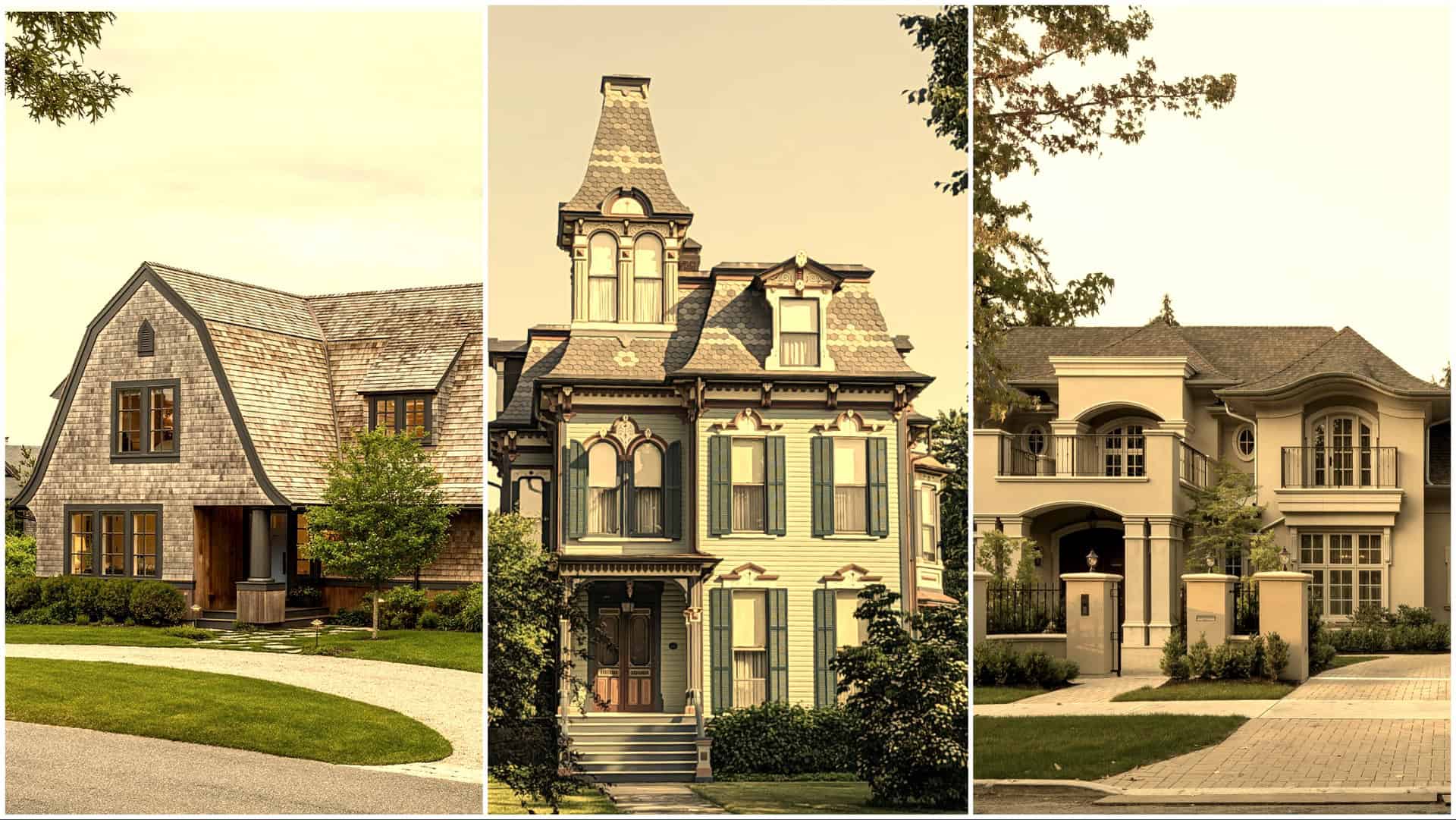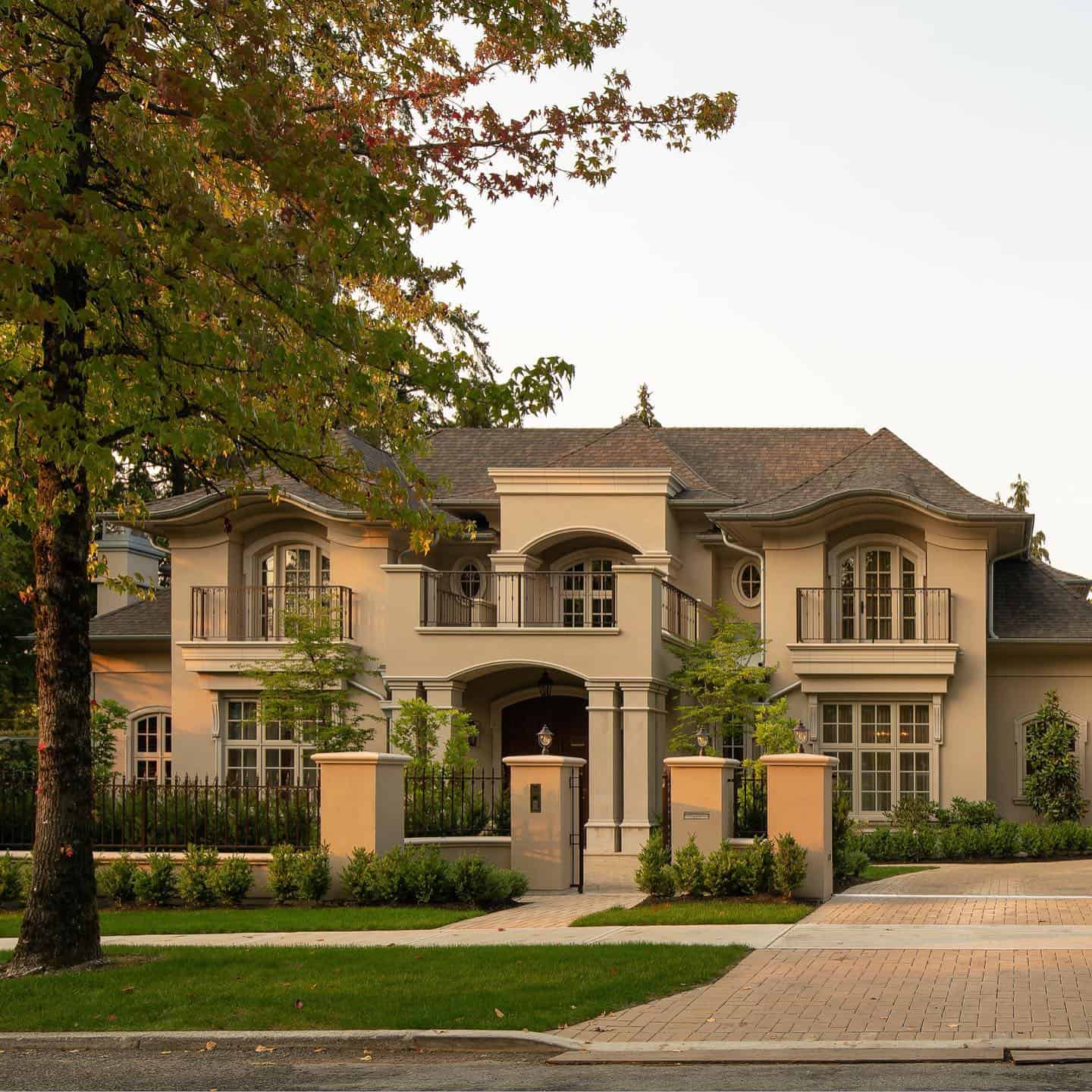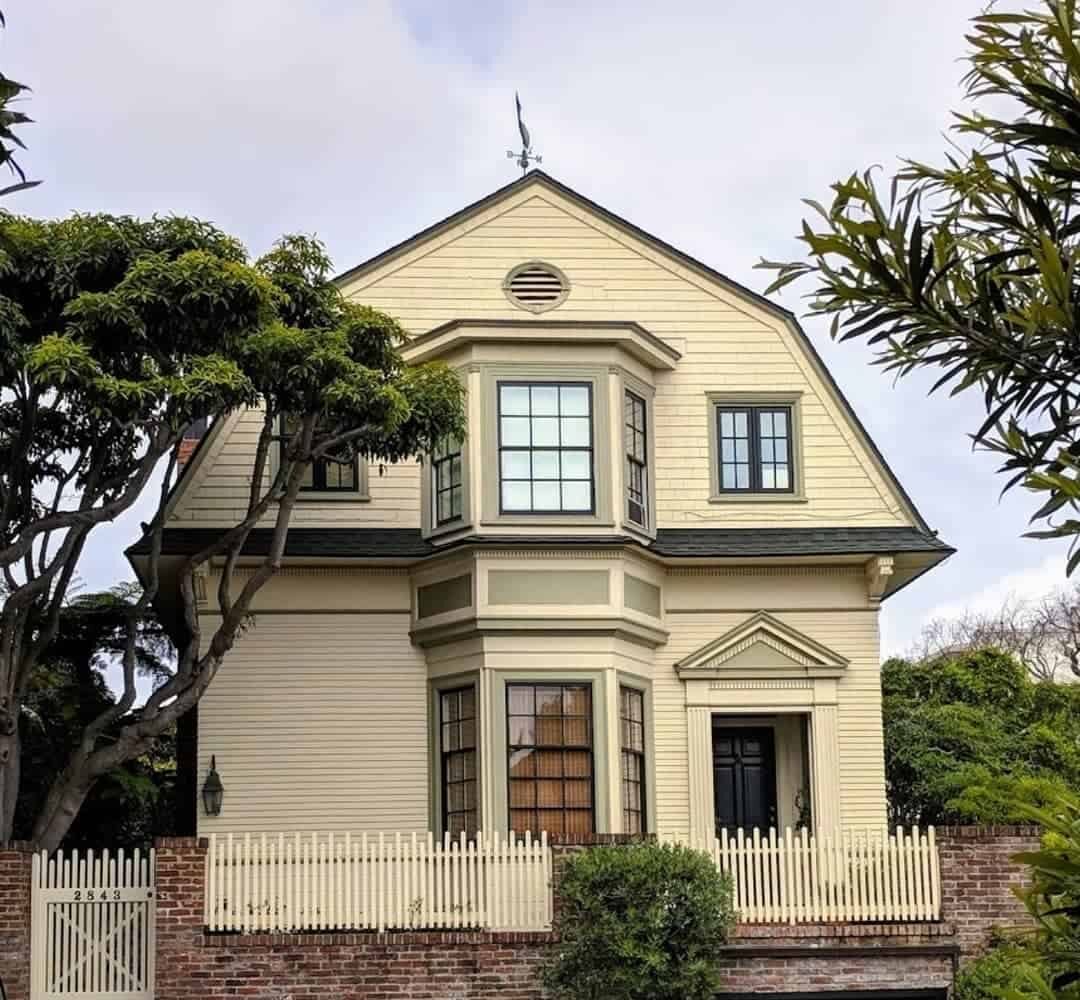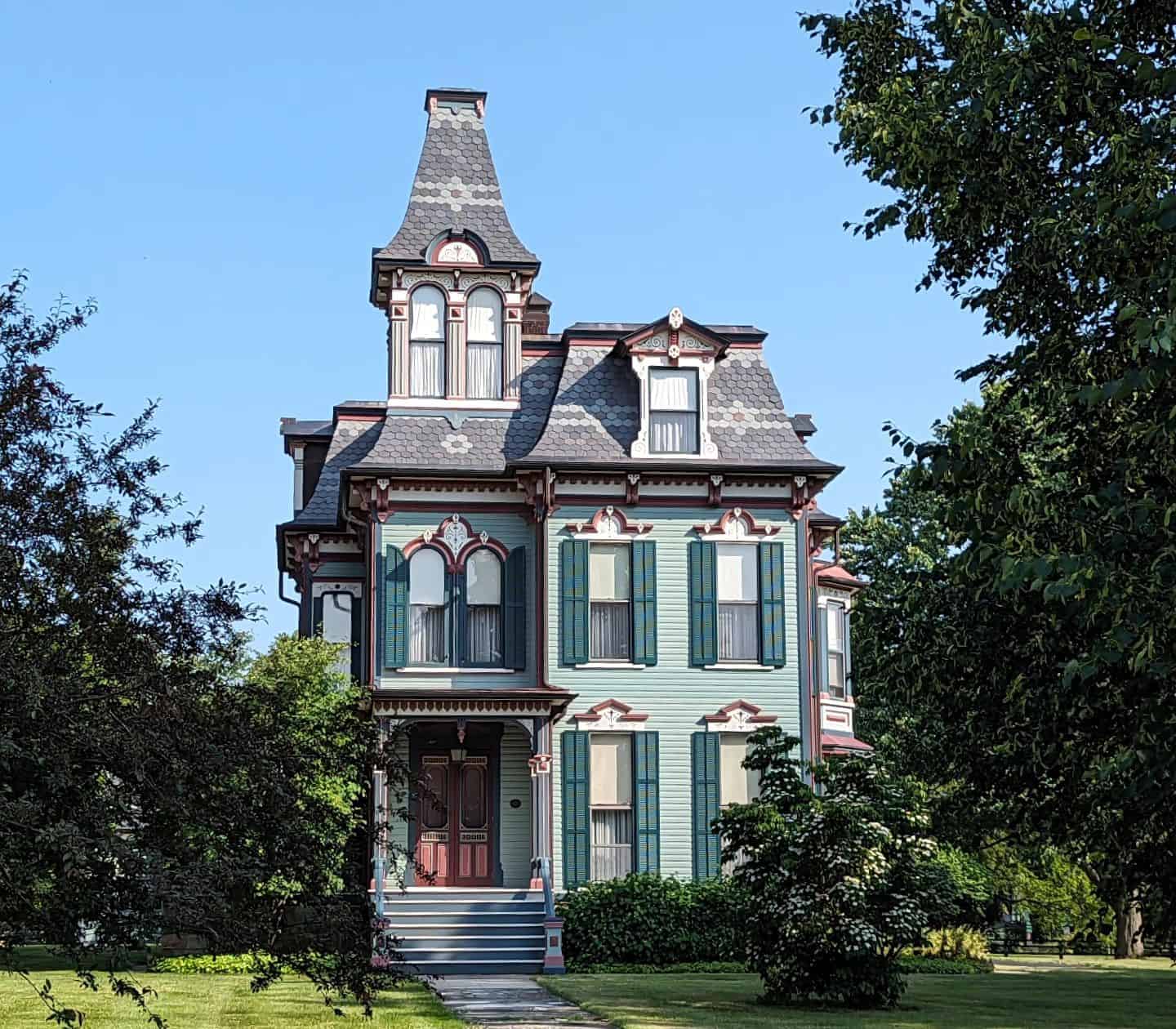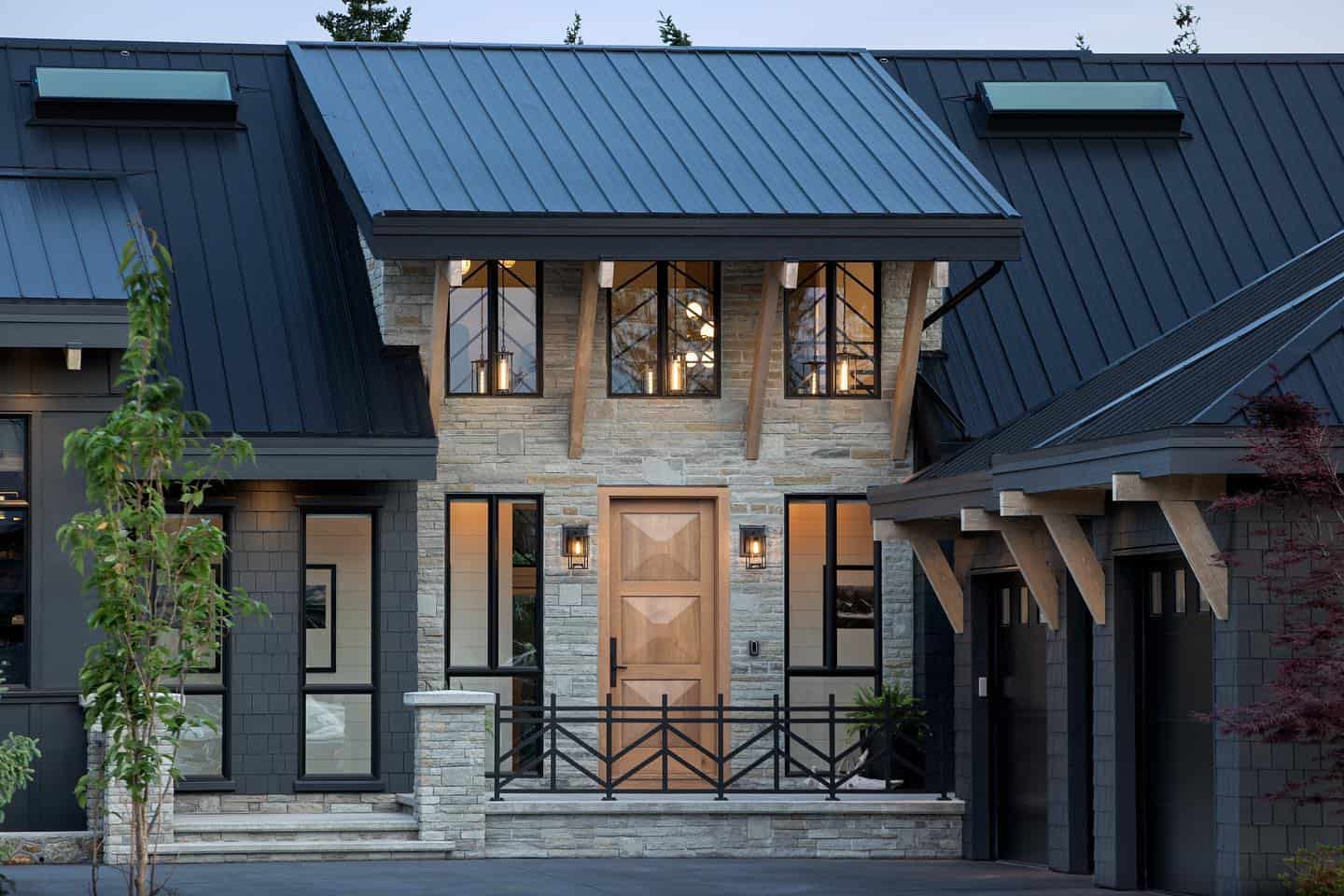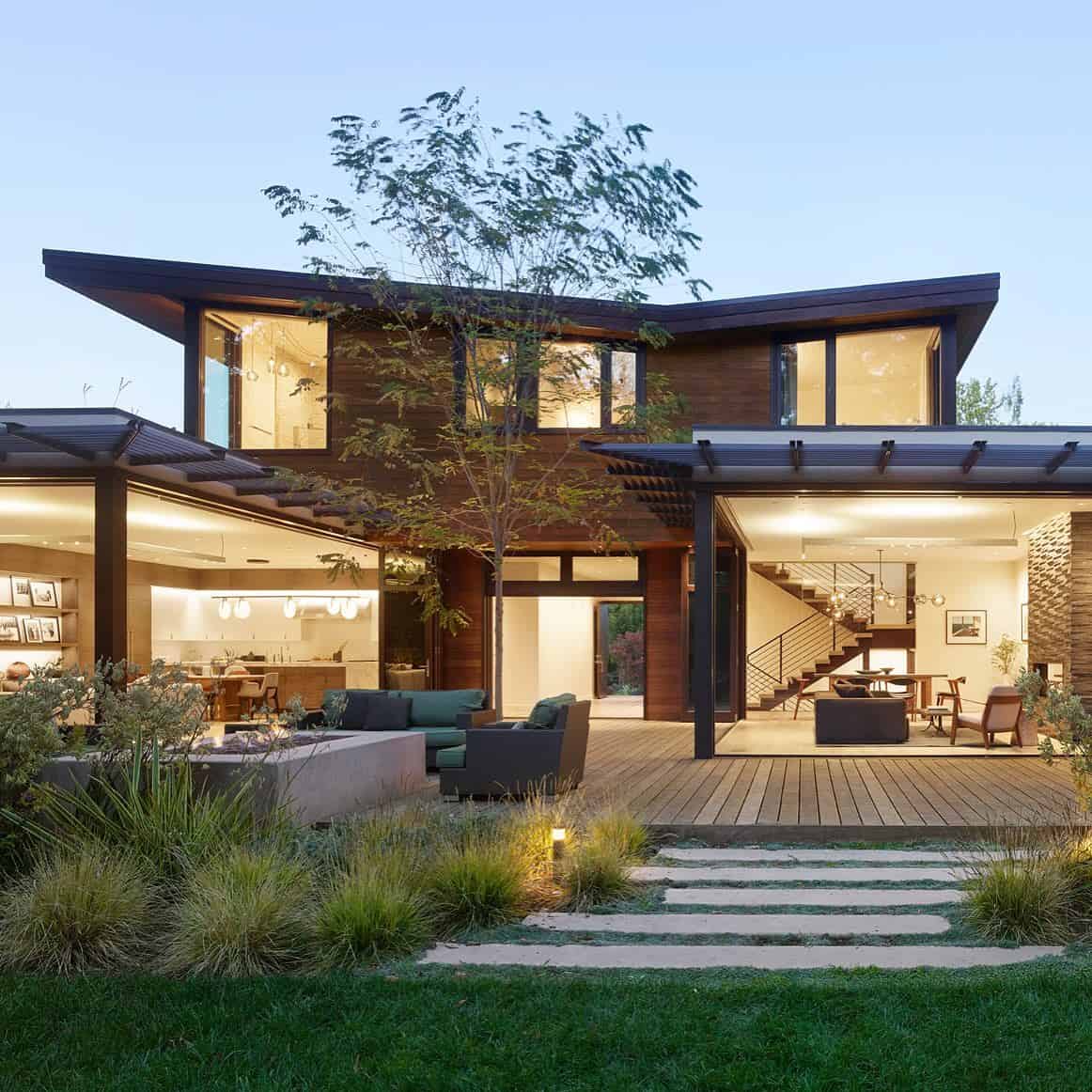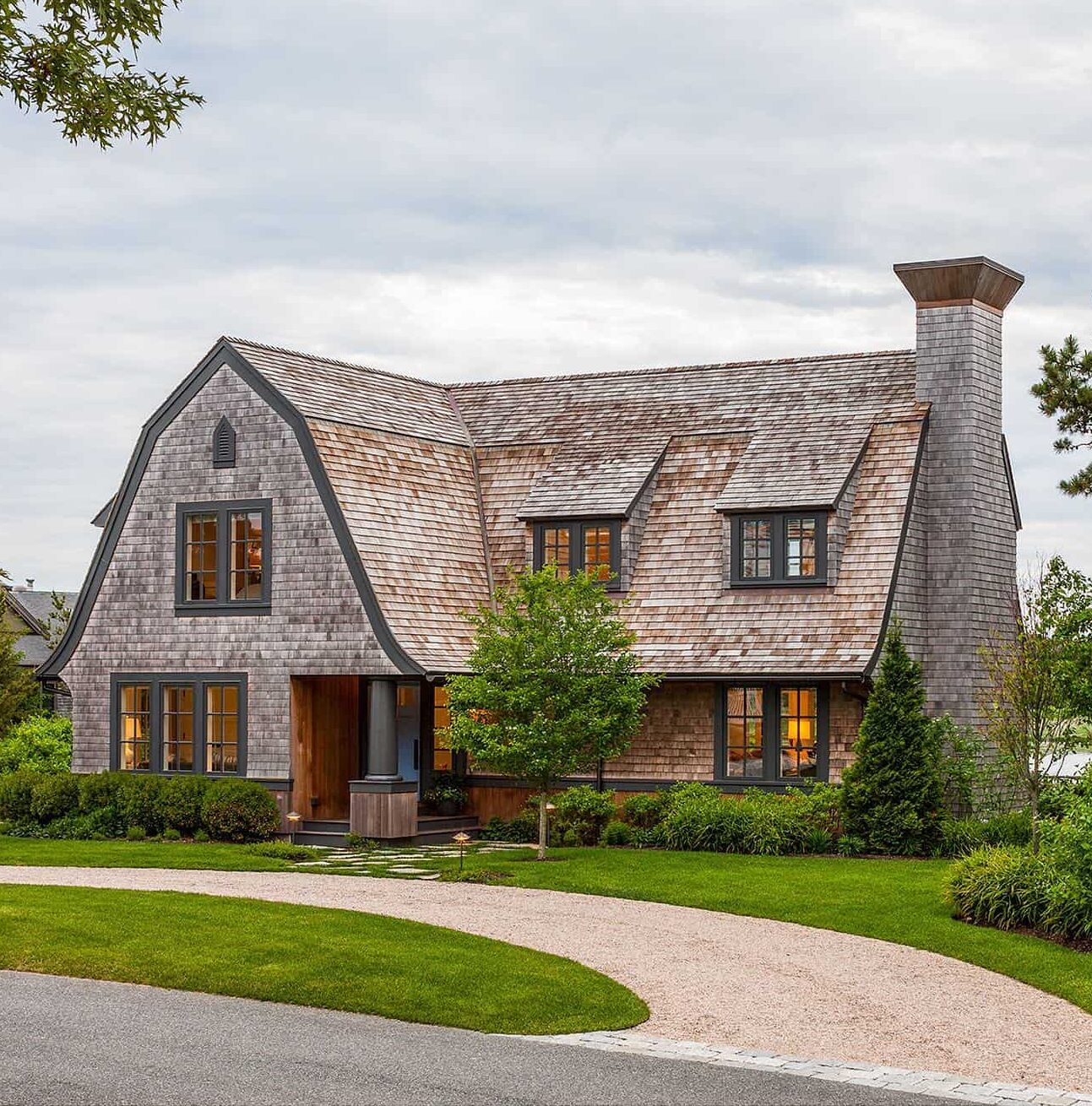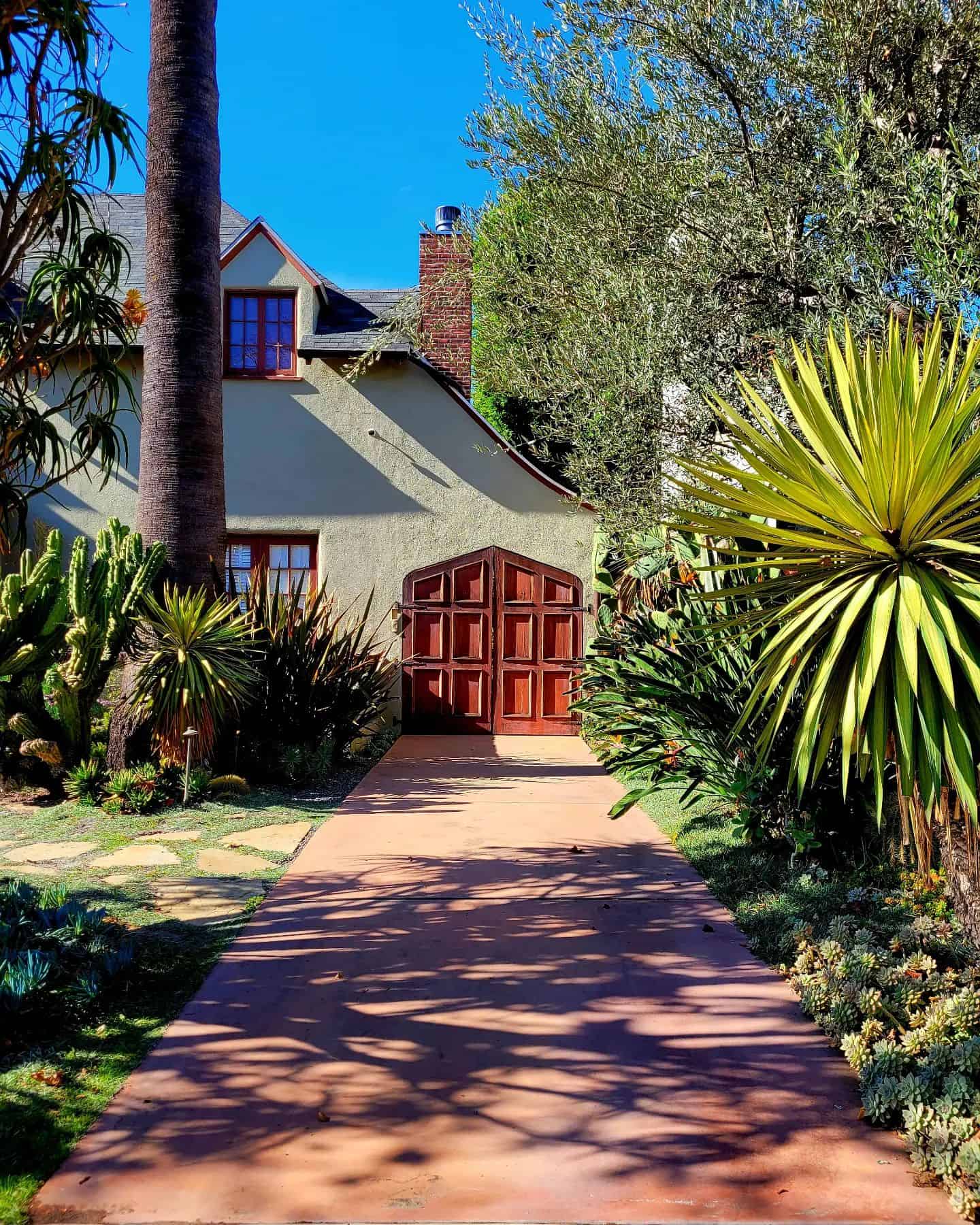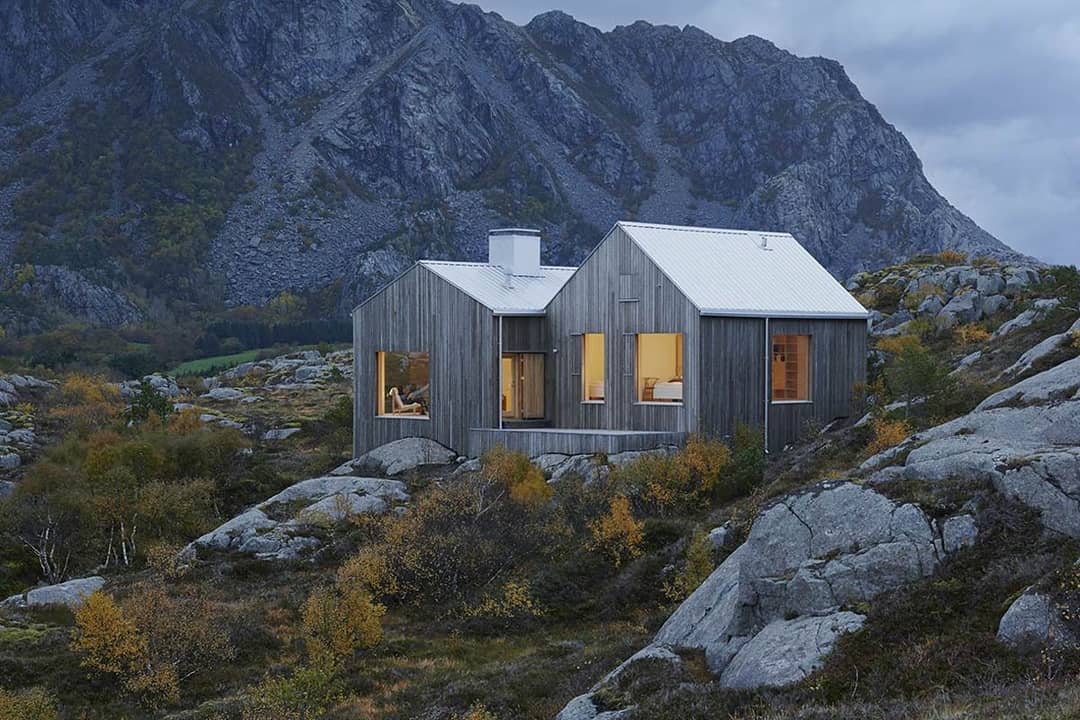To an amateur, it may seem like the choice of roof is solely up to your desired aesthetic, but it turns out there’s a lot more to it.
Your perfect roof depends upon the climate you live in just as much as it depends on your taste.
Read on to learn about the 10 different types of roofs and their main characteristics.
1. Gable Roof
You could say that the gable roof is the classic. If you were to doodle a house in the corner of your notebook, it would have a gable roof.
It’s the recognizable triangle that carries a timeless appeal. The gable roof is also an economical choice.
On the other hand, if you live in a climate where it often rains or snows, this is the best roof for your home as its sharp angles are quick to be rid of excessive build-up.
Now, strong winds are another story. The gable roof has a high probability of sustaining damage in the windy climate.
2. Hip Roof
Though somewhat similar to the gable, the hip roof is more of a cone than a triangle as it’s got a central ridge.
This is a popular and practical choice for places plagued by hurricanes.
They are more pricey than gable roofs simply because the construction is a little more complicated and they require more material.
Still, the investment is definitely worth it if you live in a harsher climate.
3. Dutch Roof
The Dutch roof is a combination of the hip with another type of roof.
In the above picture, you can see that the hip ridge is topped with a gambrel roof.
The best feature of these roofs is that they offer more attic space and the option to add a dormer window or a decorative touch.
They also create a characteristic silhouette.
4. Mansard Roof
Mansard, also known as French roofs, have four sides and each one is sloping at a different angle.
They provide the house with a romantic appeal unlike any other type of roof, and the ‘attic’ space that they grant you is enough to be livable.
This allows you to consider the options of creating additional living space for yourself or even renting.
However, I’m sure you already assumed that this roof design is quite expensive, and rightfully so because it requires more time, skill and material to be made.
They’re also not recommended for heavy snowfall.
5. Flat Roof
Flat roofs are an economical, eco-friendly, and stylistic choice. They’re quite popular in urban areas and warmer climates.
The flat roof is also a usable space, much like an extra floor, but open. It’s great for house parties or a small garden.
The roofs are slightly tilted so that water may run off, however, they still don’t fare too well with heavy rain and snow.
They require regular maintenance against the harsher weather, however. Neglecting your flat roof could easily lead to leaking.
6. Shed Roof
The shed roof is a popular feature in modern architecture due to its minimalist appeal and sharp angle.
These roofs are quick and easy to install, which is why they’re a cost-effective choice as well. They’re great in rainy areas and the angle is an ideal spot for solar panel placement.
The main issue lies in insulation, as the roof is quite low and doesn’t provide much shield to the sides.
Still, it’s got many pros, and if you really like the design and smaller price, there are alternative ways to insulate the space.
7. Butterfly Roof
The butterfly roof contains two sides that are sloping inwards, allowing the water to run to the middle. This is great if you wish to collect and reuse rainwater.
The roof leaves the sides of the home open, allowing ample space for large windows. It also sports a modern appeal overall.
The angle of the roof also works great for solar panels, and depending on the used material, the price may vary.
Now, while the midpoint is great for collecting rainwater, it also allows snow to pile. This means high maintenance if you live in the area that gets heavier snowfall.
8. Gambrel Roof
Gambrel roof is an ideal choice for country, barn, and farmhouse-style homes. It’s got double slopes on each side, the installation is quite simple and the roof allows for ample attic space.
So, you’ve got space, cost-effective installation, and a unique design. But what about the weather?
Sadly, gambrel roofs aren’t fit for heavy snowfall or strong winds. They may even be dangerous in harsher weather conditions.
9. Dormer Roof
The dormer option actually represents the small roofed window that protrudes from the larger roof.
It allows for a larger attic space or an extra bedroom with a window of its own. Their design is homey and sophisticated at once, but the installation process is complicated.
That means a higher price, but this kind of roof can seriously increase the value of your property and promote its aesthetic.
Also, dormer roofs require some maintenance. Make sure to regularly inspect the windows for any gaps or deterioration.
10. M-Shaped Roof
The M-shaped roof has a few different names. It’s known as the valley roof, double gable, or double-pitched roof.
Depending on the height of the gable, these roofs can support either the modern or the country’s aesthetic.
The installation isn’t too complicated, hence the price comes down to the material and the size. These roofs are quite efficient for rainy weather and they grant you a large attic space.
However, given that the roof contains a valley, it doesn’t fare very well in heavy snowfall since the snow may easily accumulate there.

